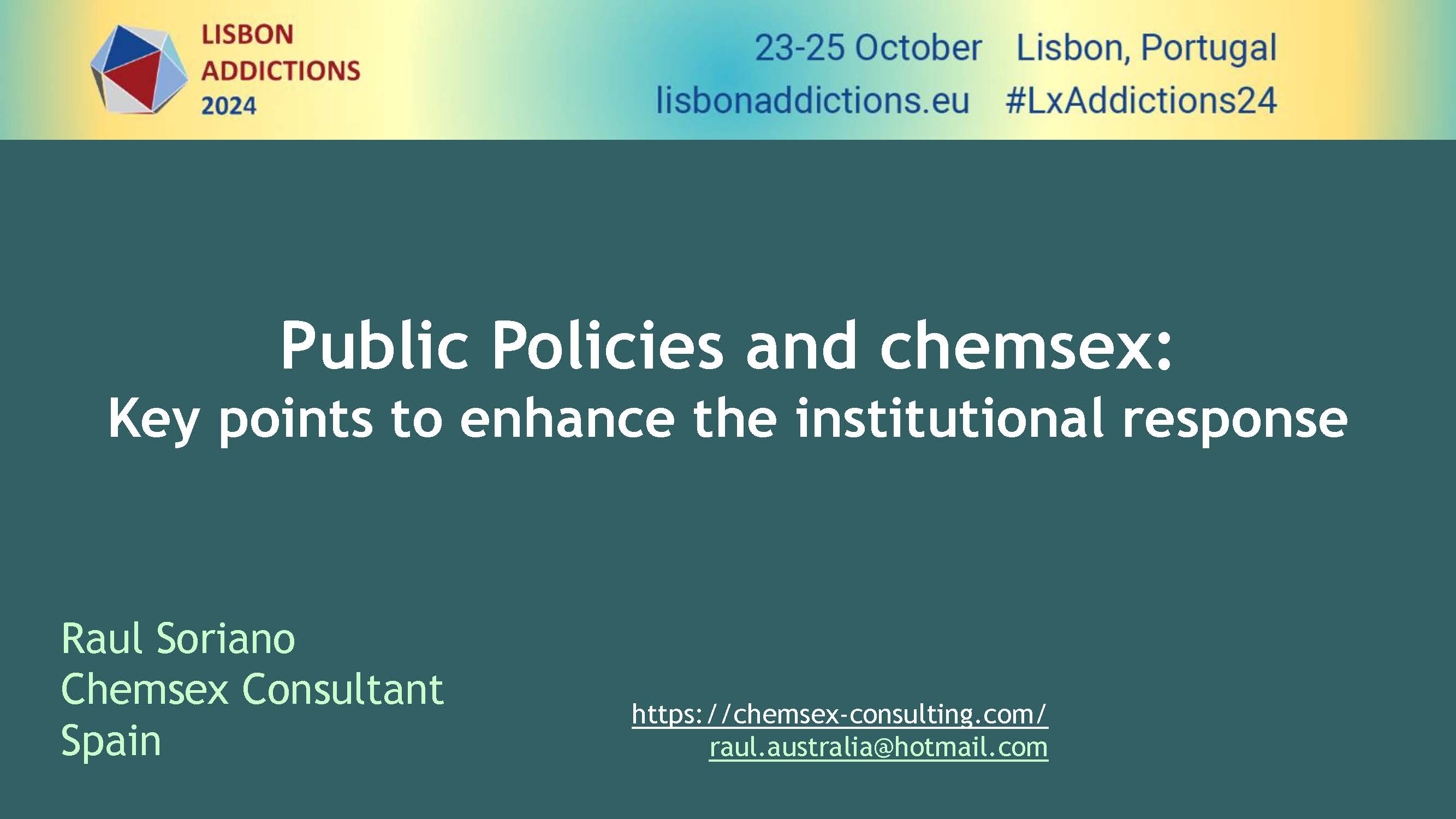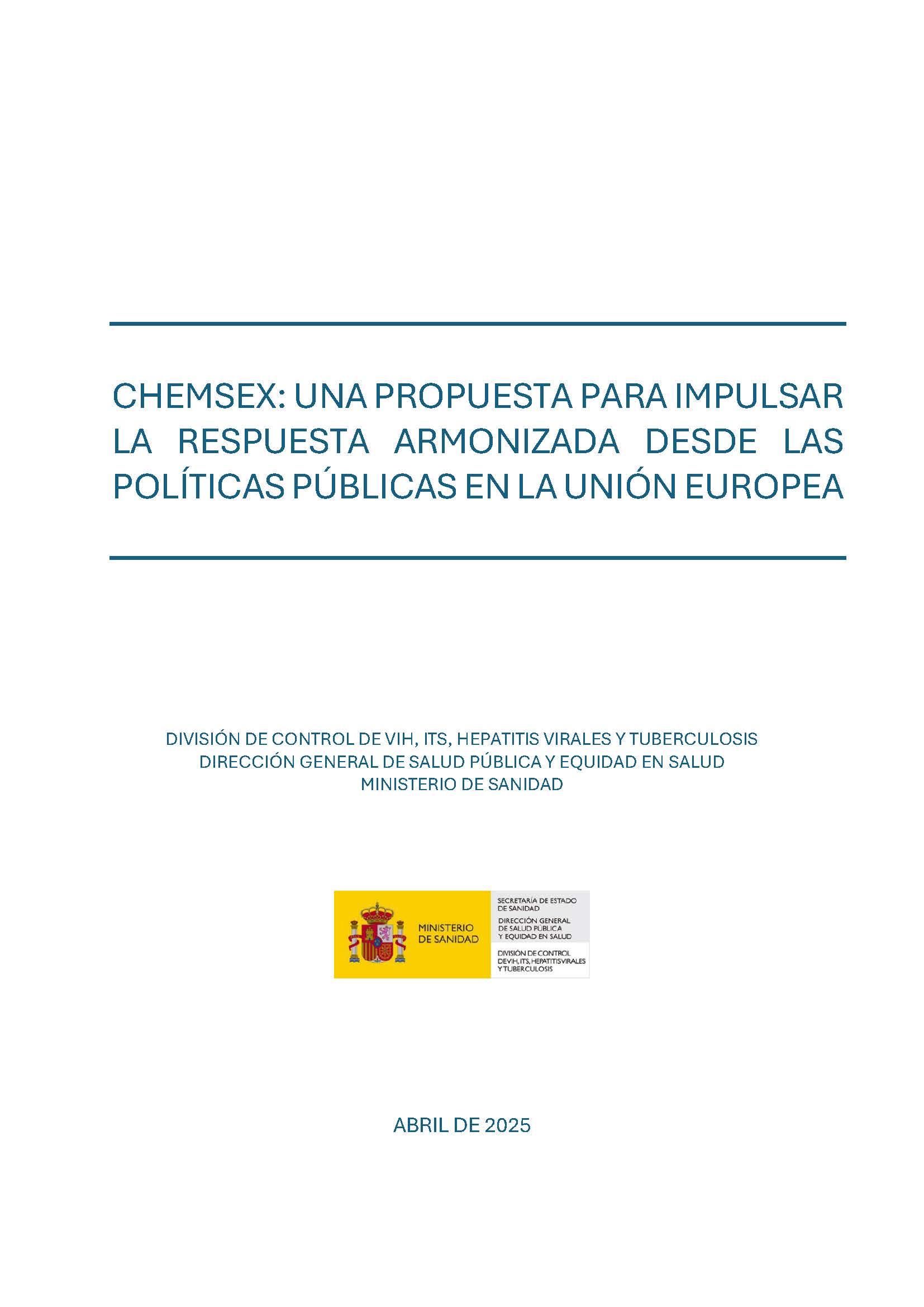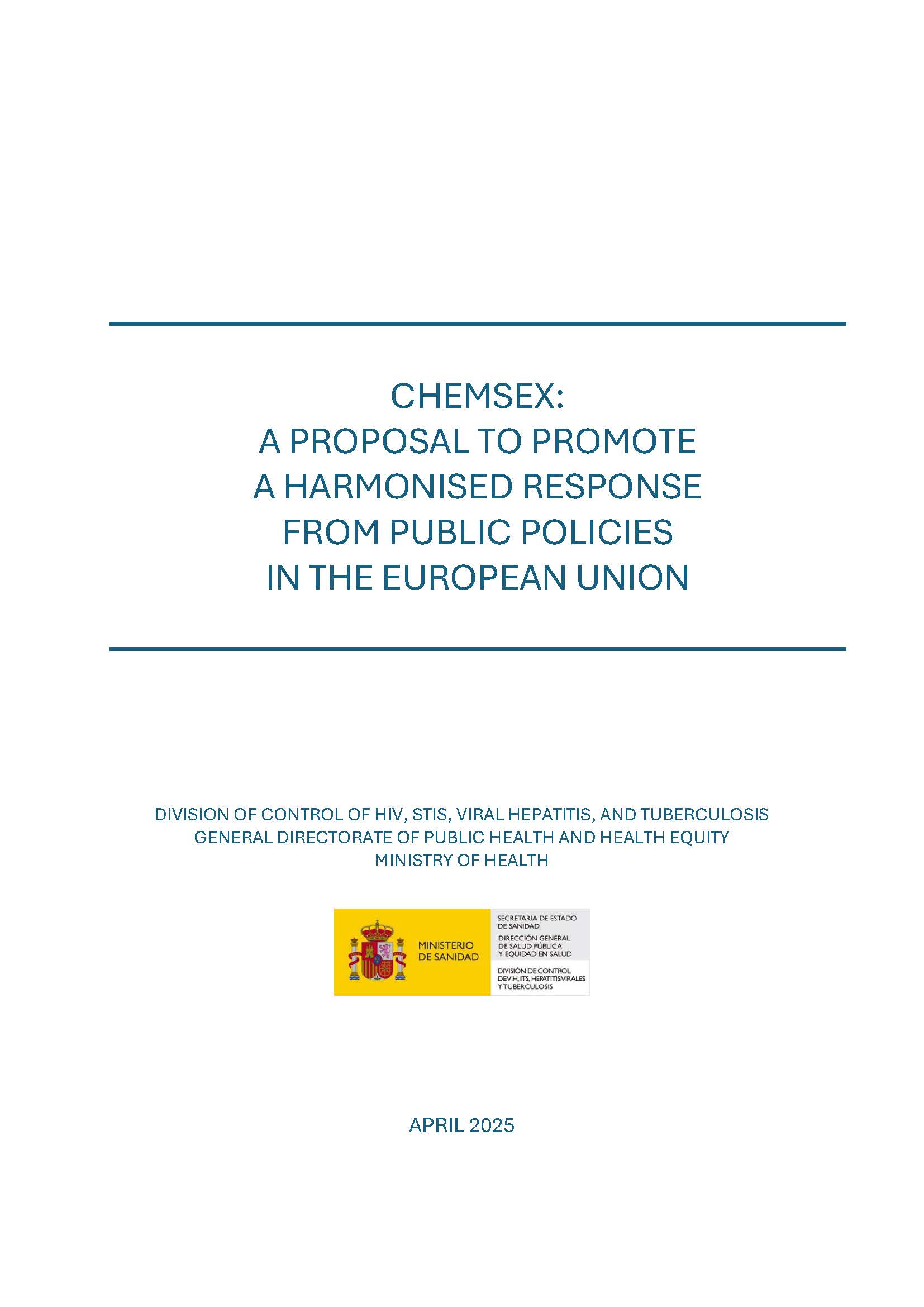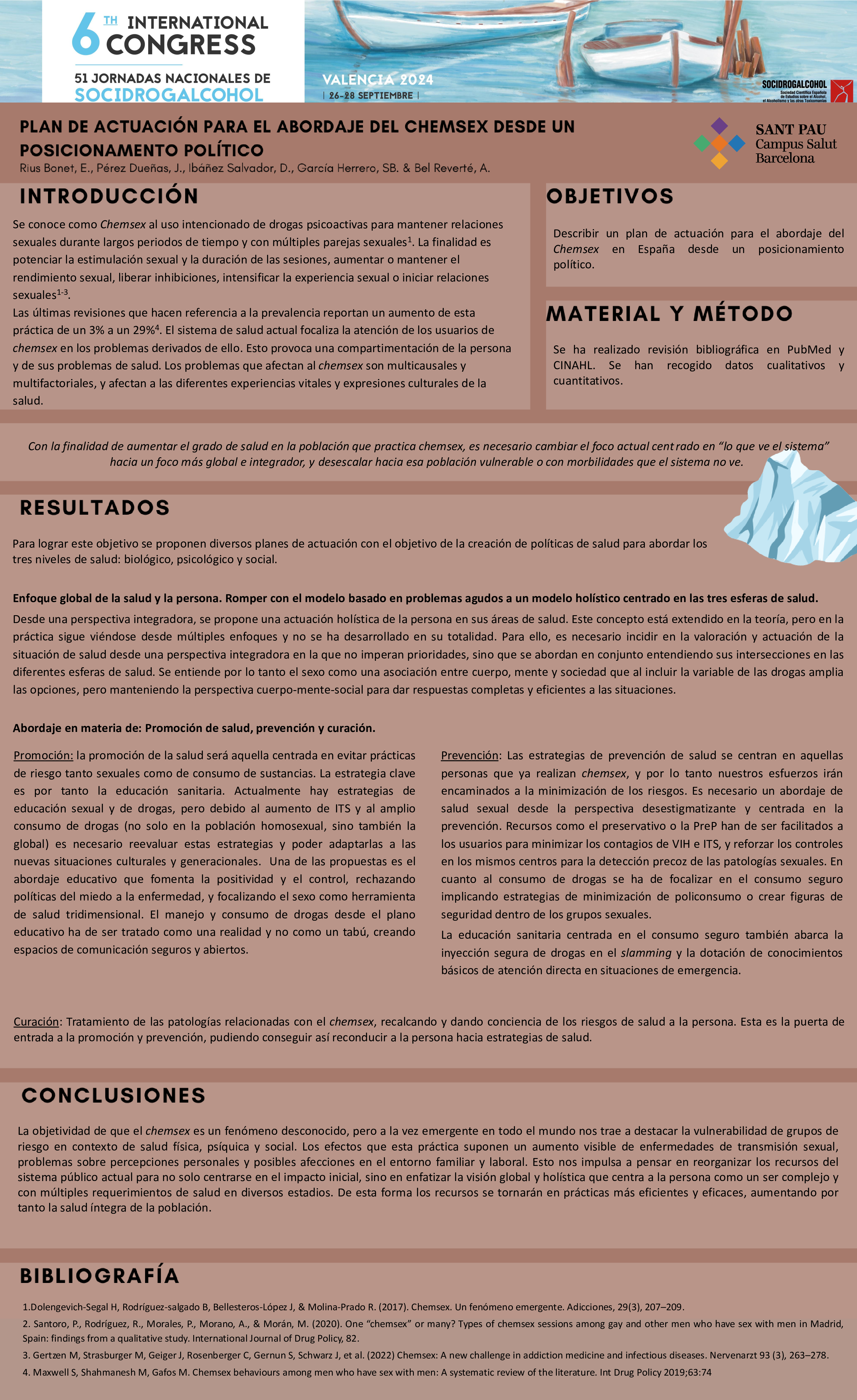Resum
Background: Chemsex is a particular type of sexualised substance practice amongst gay and bisexual men, other MSM, and trans and non-binary people. There is a growing concern about this phenomenon, as the intensive and sustained practice of chemsex can have serious health implications, including: high risk for acquiring and transmitting HIV and other STIs, addiction and other mental health impacts, among other described situations. In 2015, the workshop designer submitted a proposal to the Ministry of Health in Spain to coordinate a response to the emerging chemsex phenomenon. Its content outlined different lines of action including: preventive measures, support for individuals engaged in chemsex, specialized training courses, epidemiological surveillance, and the establishment of a collaborative working group. Significantly, many elements of this proposal have since been integrated into Spain's public health policies, offering a noteworthy case study that can serve as a valuable reference for enhancing chemsex response strategies in other countries. Drawing on this experience, this workshop aims to enhance the institutional response to chemsex through public policies, in coordination with key community stakeholders, serving as a model for other countries seeking to progress in addressing this phenomenon. Learning Objectives: Provide participants with knowledge to better understand the chemsex phenomenon, including the affected populations, substances involved and potential health risks associated with chemsex practices. Empower participants with the tools to organize a tailored response through public policies to address the chemsex phenomenon in their own cities or regions.
Methods: In this workshop on public policies and chemsex the approach will begin by first identifying the level of knowledge about thechemsex phenomenon through polling questions, establishing a common foundation upon which to articulate the discussion. The lines of action proposed in Spain will be presented, followed by examples of implemented measures. Participants in the workshop will engage in small group discussions regarding the potential transfer or adaptation of these lines of action, taking into account the chemsex situation and implemented measures in their own cities.
Results of the workshop: Participants wil be able to identify key areas for action within public policy, encompassing aspects related to prevention, support for chemsex users, specialized training, research, updating information systems, epidemiological surveillance and coordination among key stakeholders.
Conclusion: Enhancing training and education on chemsex is a crucial component for improving understanding of this phenomenon and driving an effective response through public policies.






